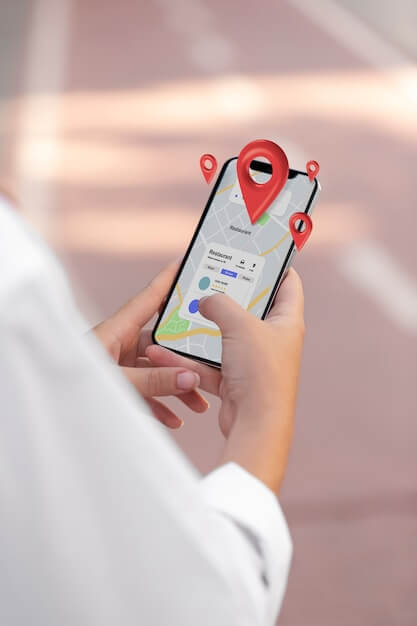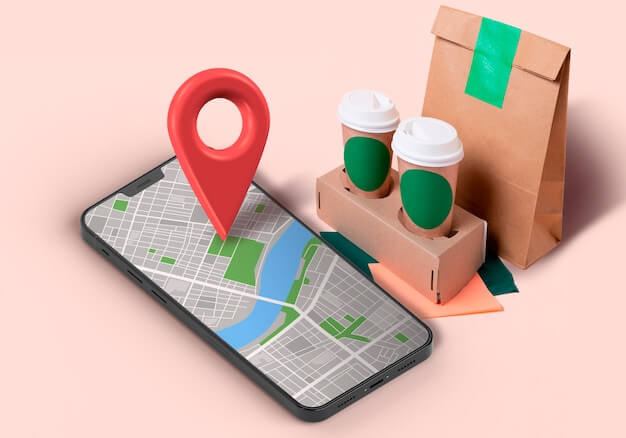In our highly connected digital world, an all-round marketing approach can help brands bridge the gap between online and offline consumer behavior. However, promoting an effective multi touch strategy has its unique challenges, and our strategy is often effective only when we know it.
Especially in the past decade, user location data has become a wealth of marketing information for marketers, including where users spend their time and how they interact with online and offline brands. From offline attributes to geographic positioning, location data can help marketers better understand customer journeys. According to BIA consulting data, in 2019, the marketing personnel in the United States alone will spend more than $26 billion on location-based data marketing. Although location-based marketing is a powerful strategy for marketers, it may also be a black box.

What is location marketing?
Location based marketing is a marketing method that aims at the audience according to their current or recent position.
Location marketing agency Simpli Frost Prioleau, chief executive officer and co-founder of fi, said, "This includes everything from users living in specific zip codes to devices that tend to visit specific locations, such as coffee shops, 4S stores, restaurants, etc."
Location data can show customers' daily travel habits (such as commuting), recurring shopping habits (such as shopping or gas stations), restaurant preferences, and even online shopping behavior. These data provide more personalized goals for products and services that customers may care about, and provide more efficient advertising positioning and budget allocation for marketing personnel.
Location marketing strategy
There are several methods to position the application of location marketing in actual marketing:
Geographic fence. Geofencing refers to the mechanism of collecting location data in real time. In geographic location, virtual boundary is built around a location for real-time data collection or target location within the geographic region. It uses the combination of global positioning system (GPS), latitude and longitude coordinates, radio frequency identification (RFID), Bluetooth technology and location beacons to determine the designated regional boundaries. Marketers can use geographic positioning as a tool for geographic positioning or close marketing. Geofencing allows the administrator to set triggers, so when the device enters or exits the boundary specified by the administrator, a short message (SMS) or email will be sent.
This technology is not a new technology, but its increasing popularity and application in digital positioning bring more opportunities for location marketing based on real-time positioning.
When customers enter a geographic area and share their location with an application or browser, local content may be provided in the form of push notifications, photo geo filters, text messages, or advertisements within the application.

Geographic positioning. It refers to the customized advertising activities for a product or service for a specific market according to the geographical location of potential buyers. Similar to geographic fence, geographic positioning is often used to send advertisements to customers at a certain location. However, unlike geographic fence, geographic positioning often combines past location data with specific audience attributes. Advertisers can combine the defined criteria (such as demography, behavior, interest, etc.) to specify the required location, so as to target the target customer groups that meet the exact needs.
Geographical positioning with historical data enables marketers to carry out marketing campaigns based on the behavior or shopping trends of specific locations, so as to reach more accurate audience groups.
Geographic conquest. Back to location-based marketing in his column. Brian Handly once explained in his column on geographic marketing that geographic conquest is used to help brands reach audiences who have gone to their competitors' locations. "For example, Burger King used geographic conquest to launch a marketing campaign to offer a penny discount to visitors who opened the app when visiting McDonald's restaurants."
Geographic conquest is best used as a strategy for those real-time users at a certain location, but it can also be applied to reach historical audiences.
Close marketing. Close distance marketing is a more fine-grained location-based marketing method. It usually uses geographic positioning to provide timely advertising for customers in a specific place in real time. Marketers can use close-up marketing to carry out local activities or frequent store visits, aiming to provide services for the most relevant content at a specific time (i.e. nearby chain restaurants, gas stations, etc.).
For example, Waze, a navigation application, uses proximity marketing on its advertising platform. When a driver approaches a promotion site or billboard, the application will send an advertisement when the car stops. Then, advertisers can make use of customers' location, frequent routes, weather, time and other information to provide local suggestions based on what customers know at this moment.
Application of Location Data in Marketing
Browsers, search engines, applications and social platforms all collect data and provide organic content and paid content related to consumers according to their location. Jeff White, founder of the location data provider Gravy Analytics, explained that location data collection is nothing new, but it has not proved to be a profitable asset for marketers until the past decade.
"The early adopters of location data information came from e-commerce and large enterprises. In the early days, it was significant for large retailers and hotels," he said. "But now, location data is suitable for a wider range of uses, which provide valuable insight into consumer behavior."
Location data and customer journeys. To determine how location data plays a role in marketing, it is important to understand the most valuable location experience for consumers, and it is also the most valuable for advertisers.
White said, "For example, visiting a convenience store has a different meaning for consumers than visiting a wine tasting festival." Location data provides a set of tools that marketers can use to fill the gaps in consumer profiles. In this case, valuable location-based experience is the missing part.
Industrial sector. Retailers or service providers with physical stores are most suitable for location-based marketing. Local commercial marketers can do some marketing activities based on geographical positioning to reach the audience according to the actual visit to the store, rather than relying only on online digitization.
Simpli. Prioleau of fi explained that location-based positioning can be used by enterprises to "drive users to their stores or locations (such as fast food, retail, automobile and other industries), as well as advertisers who want to increase their website or application traffic (e-commerce, brands directly to consumers, insurance, other service providers, etc.)."
Similarly, niche industries such as real estate, education and transportation also benefit from location-based marketing due to the nature of their business. Marketers in these niche industries can outline the overall image of potential buyers by understanding their intentions and time investment level according to their location behavior.
"Location data is the next frontier in understanding consumer behavior," White said "Things like collections and geofencing open houses can help marketers better understand who might be a high-quality leader."
Online and offline. In addition to providing a more targeted advertising experience, location intelligence can also be used to help narrow the gap between online and offline purchases. For enterprises with stores, real-time location data can help fill the loopholes in customers' journey, because it reveals the relationship between online contact points and face-to-face transactions.
How to collect location data
The process of data collection and the ethics surrounding data collection are increasingly under attack, which can be demonstrated from the following aspects: increasing concerns about user privacy and the purpose of the regulatory legislature is to protect it.
Although the extensive promotion of data regulation has brought challenges to marketers, it also provides an opportunity for enterprises to build a trust foundation with customers. By obtaining users' consent and providing visibility into how to use location data, marketers can maintain customers' trust and provide meaningful content during the purchase process.
White mentioned that the location data collection process involves several steps, including anonymization.
- When the application or browser prompts, users agree to share their location data by selecting.
- Then the SDK collects and transmits information about the user's location, including geographic coordinates and time spent.
- Then, clean up and anonymize the location data, and aggregate it into the database to generate specific user profiles.
- The marketer can then use all this information, using programming (via DSP) or direct advertising to target customers.
When users browse on the public WiFi network or explicitly share their location during search, user data can be collected through IP address or mobile device ID. In this process, the unique ID connected to the user's device (desktop or mobile device) is collected to provide the advertiser with a redirect identifier.
Privacy Issues and Responsibilities of Marketers
The data leakage and poor data management of advertising technology giants have aroused great concern of users, which has enabled people to have a higher understanding of the way of data collection and use. It is natural that consumers are worried.
Challenges brought by regulatory legislation, such as the European Union's GDPR and the California Consumer Privacy Act (CCPA), which will take effect next year, may have a significant impact on the way marketers use location data in marketing activities. However, this move also creates opportunities to improve the transparency of marketing personnel.
Prioleau said: "When launching location-based marketing, advertisers should use platforms that meet GDPR and other privacy standards, and focus on using data collected based on these standards."
By taking measures to ensure privacy is the most important, marketers and enterprises can better achieve the desired location-based marketing results. Marketers should regard user privacy as an aspect of their own and their customers' best interests to establish a transparent foundation.
But marketers have the responsibility to accept privacy standards, which in turn creates a trusted environment for users. From the rich location data that consumers voluntarily provide, marketers can draw meaningful insights and connect online touchpoints with real-world applications.
Some challenges
Like any other target positioning method, location marketing also has its limitations. This can be driven not only by the quality and quantity of data, but also by regulation or compliance.
To successfully carry out a location-based marketing campaign, the most common challenge is to choose a location that does not have enough scale to create a meaningful audience. From choosing a place with limited pedestrian traffic to an event that may last only one day or several hours, the forms are also different. Sometimes, marketers will also find that when enterprises are very close together and above each other, such as shopping centers, location-based audiences will face challenges.
Not all brands and products use location marketing, for example, potato chips, toothpaste, dog food, etc. Advertisers cannot benefit from location data even if they get location data. Marketers of these products need to use other targeting methods, such as demographics and purchase history.
Another challenge is to create audiences around sensitive locations or discriminatory audiences. Many companies with a sense of social responsibility do not allow marketers to do marketing activities in sensitive areas (mainly related to health care) to obtain the target audience they need, nor do they allow them to engage in any discriminatory practices. However, this does not mean that all companies and their marketing personnel will abide by social principles. Therefore, it may be a big hidden danger.















